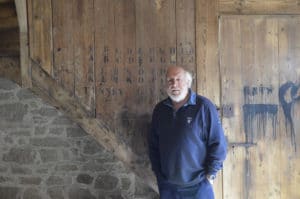" For me, heritage is the genetics of civilisation. It is the heritage of facts, discoveries, habits and customs, art, architecture, inventions and techniques. This heritage allows us to understand where we come from and where we are today. It is necessary to keep in mind the path we have travelled, which explains how we have evolved or can evolve. From this memory we can keep the benefits but also analyse the mistakes, in order to avoid reproducing them and to improve. "Pierre-Jean Desfossé, President of ACAL - 2019-2022
After spending a good part of his professional life in the IT sector, Pierre-Jean Desfossé has put his energy and motivation at the service of the Alexis Le Gall cannery museum project. It must be said that this collector car enthusiast, former president of the Teuf-Teuf club and administrator of the French Federation of Vintage Vehicles, is entirely devoted to the preservation of heritage. After two years as a volunteer of the association of the Friends of the Alexis Le Gall cannery, he became its president in 2018. Since this election, he has dedicated himself to bringing the museum project to life.
his background professional
I am a computer scientist by training. I taught at the IUT in Reims, then worked for a computer manufacturer and for two other companies. I worked as a trainer, analyst, system engineer, technical salesman, project manager, IT manager (development, network, etc.). The last job I had was in a service company as director of a cheque sorting centre for banks (BNP, Crédit Lyonnais, Société Générale, Banque de France etc.). I was in charge of a team of 100 people processing 500,000 cheques a day, 6 days a week - 24 hours a day. Nothing to do with fish and preserves!
its notion of heritage
For me, heritage is the genetics of civilisation. It is the heritage of facts, discoveries, habits and customs, art, architecture, inventions, techniques. This heritage allows us to understand where we come from and where we are today. It is necessary to keep in mind the path we have travelled, which explains how we have evolved or can evolve. From this memory we can keep the benefits but also analyse the mistakes, in order to avoid reproducing them and to improve.
The industrial heritage is part of this memory and must be preserved. The architecture of the buildings, the equipment used, the techniques through the ages explain all the changes in work and the social changes of the workers. It is not easy to make a young person understand that before the arrival of electricity, people used gas to light their homes and that a soldering iron was heated with acetylene. There is nothing like a place where we can show them the old ways so that they remember them and understand the changes.
I am sensitive to the preservation of industrial heritage. I have been interested in automobile heritage since my youth and have been collecting cars for over 40 years. For a long time I was president of the oldest French collectors' club: the Teuf-Teuf club, founded in 1935 by Hyppolite Panhard. It is mainly cars from 1891 to 1914 that the collectors have saved, repaired and maintained and that keep this living museum running. In order to go to the end of my approach of safeguarding the rolling heritage, I am an administrator of the French Federation of Vintage Vehicles. The most exciting thing for me is not the latest model built but the first cars with their defects, the inventions of the pioneering engineers who have enabled vehicles to evolve to the performance and safety levels we know today. To drive a car from the beginning of the century, with all the risks that this entails, allows you to take the full measure of the road travelled.
Its role in the of the museum project
I discovered Loctudy during a holiday in 1954. I then came to live in Loctudy during the second part of my life. I got to know Guy Cosnard, president of the Association des Amis de la Conserverie Alexis Le Gall (ACAL) through his art as an engraver. In 2016, the museum project was just being born. Participating in the creation of a museum from "A to Z" seemed to me to be an exciting project. Guy had no trouble convincing me to join the team.
In 2018, Guy Cosnard expressed the wish to leave his post to create another association, "Arts in Loc", closer to his artistic occupations. He then offered me to replace him as president of the ACAL association. I accepted this challenge, which I found stimulating. As administrator of the Friends of the Compiègne Automobile Museum - the oldest automobile museum in France, created in 1927 - I was well aware of the challenges and the role to be played by such an association.
My role, with the help of the board of directors, was initially to support and help the commune's team in the creation and implementation of the project. To this end, we carried out a "collections project". With volunteer members, we carried out a three-month inventory of all 800 objects in the collection, in accordance with the standards of the Musées de France. This inventory consisted of sorting, dusting, numbering, identifying and describing, measuring, photographing, packing and storing the objects.
In a second phase, we created a working group to participate in the elaboration and study of the museography and scenography files to support the Town Hall team on the project. At the same time, we held meetings to keep the public informed of the project's progress, as well as on topics related to fishing and canneries in Bigouden. We also organised visits to the cannery for heritage days.
We will continue this work in the future, restoring some of the objects in the collection but also organising ourselves to help the museum live and evolve, contributing ideas, promoting it, making it known to the public and enriching its collections. I would like to make the association a meeting point for lovers of local history, the history of fishing and canneries so that they can deepen and perfect their knowledge. ACAL should be the link between the museum and the local population and tourists.
its great challenges
The biggest challenge I faced was my total lack of knowledge of the subject! When I agreed to run for the position of President of the Friends of the Alexis Le Gall Cannery Association, I clearly presented my position to the board members, on three points in particular:
- Firstly, I did not want to take anyone's place. I was running to help the association in its organisation and management.
- Secondly, I was not a local. I didn't want people to think that a "Parisian" was taking the place of a Loctudist to explain to everyone how sardines should be canned.
- Thirdly, I was a neophyte/profane on fishing techniques, canning and canning techniques. I had everything to learn about these subjects.
I hope that I have met this challenge today, in part.
its best souvenir
There is no one memory more beautiful than the others. It is a set of richnesses that were brought to me by the encounters of men and women, whether it be with the volunteers who come to clean the objects of the collection and help distribute leaflets on the market; or with the municipal agents of the different departments of the town hall who participate in the project. If I had to highlight moments that marked me, I would mention two in particular:
- The very enriching meetings on the creation of the museum, during the study of the museography and the scenography with professionals and volunteers.
- The time spent meeting and making friends with historians, fishing enthusiasts, canning experts, people who believe in this project.
To conclude, I would say that my greatest reward on this project is the smiles on all the faces I meet when I talk about the Musée de la Conserverie Alexis Le Gall.


